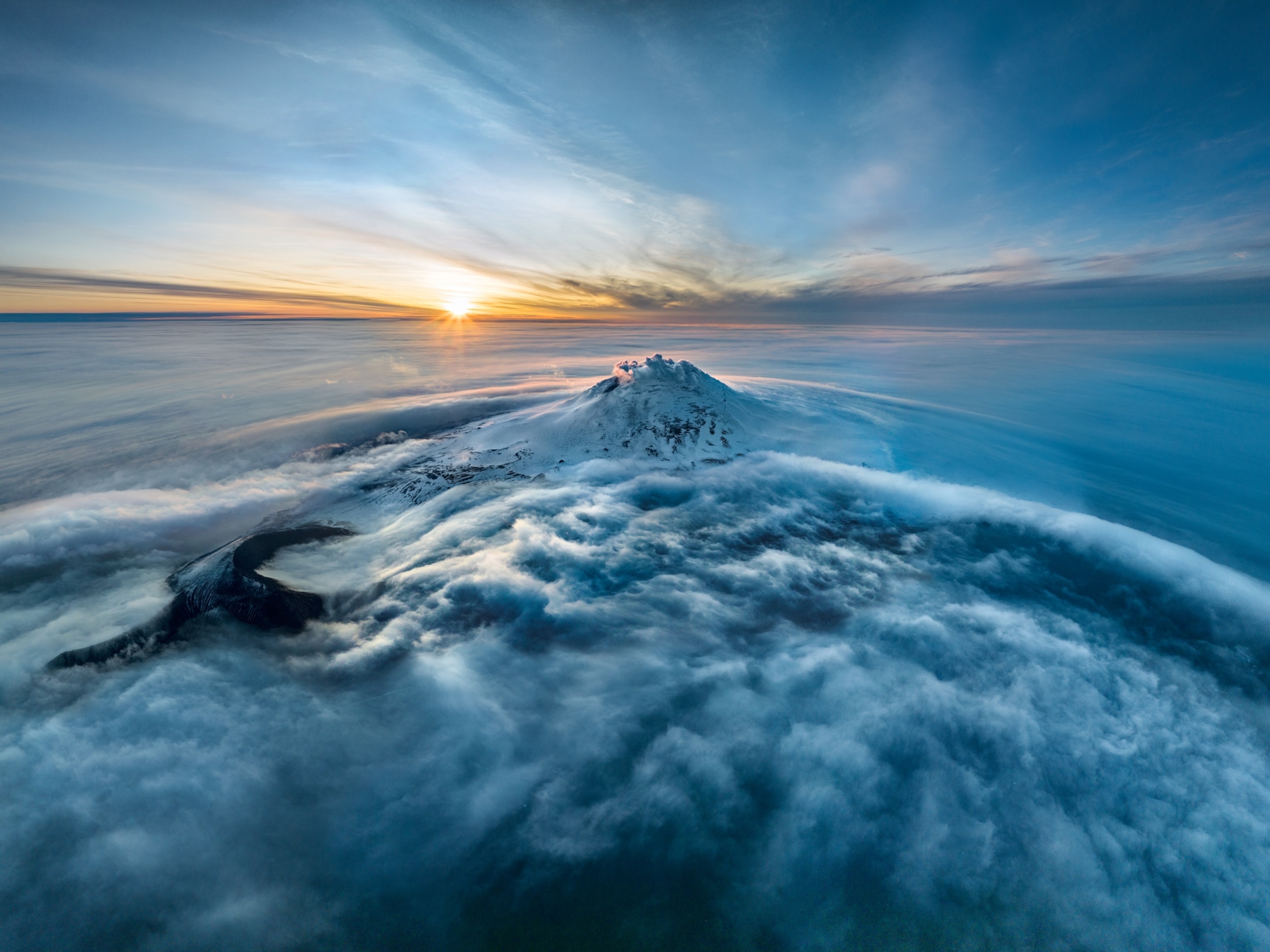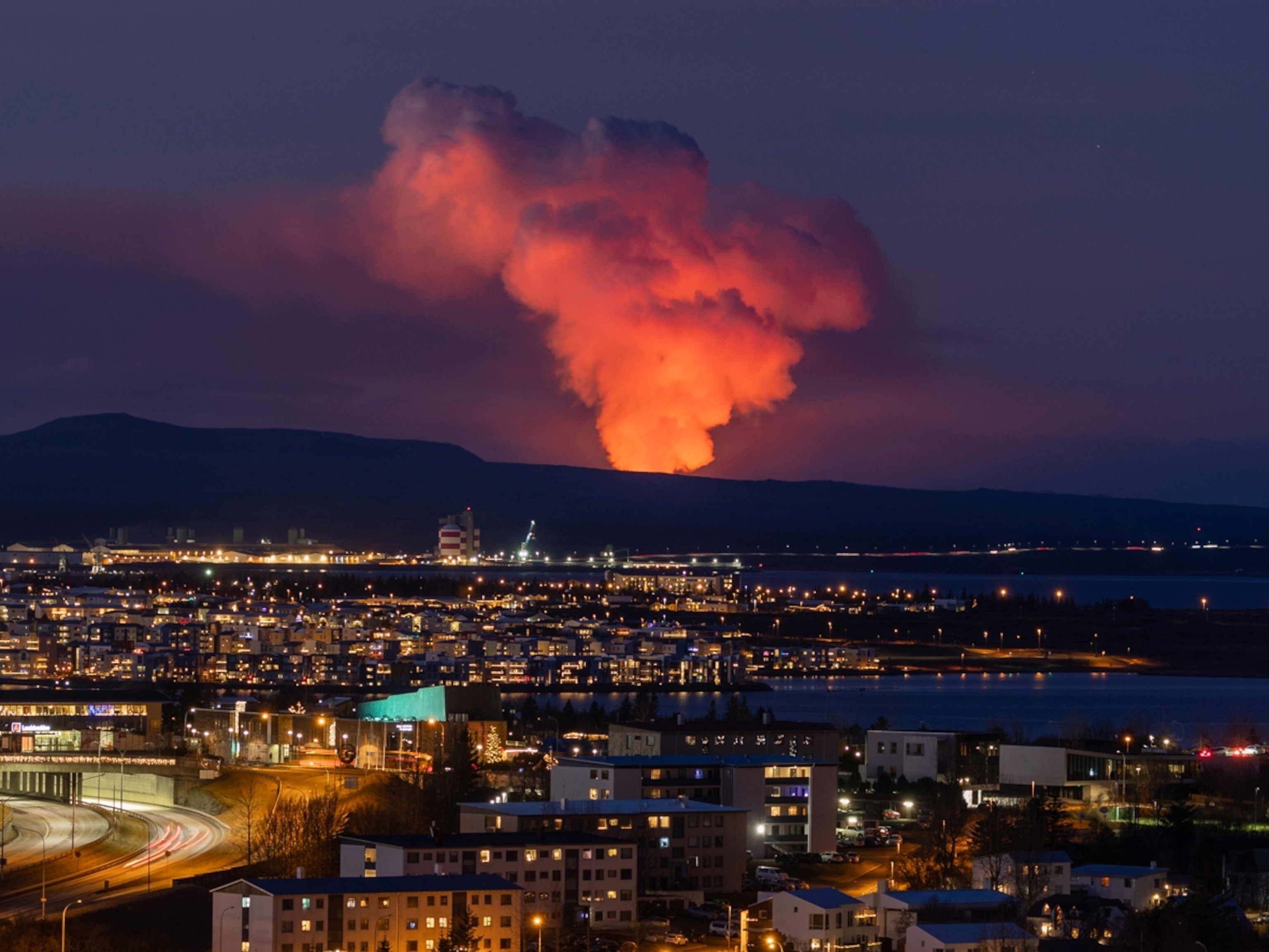Camera Gets Swallowed by Lava, But Keeps Rolling
During a volcano tour in Hawai'i, molten rock submerged a forgotten GoPro—but the camera continued to record.
One day in August 2016, Erik Storm headed to the closest volcano for work.
Storm is the owner and lead guide of Kīlauea EcoGuides, a Hawaiian tour operation that has "Volcano" in its P.O. Box address. He normally treks out to Hawai'i Volcanoes National Park on the "Big Island" three or more times each week to lead tours. On that day in August, he was leading a group of San Francisco tourists, his camera equipment in tow.
During the hike, Storm set down his GoPro HERO4 Black action camera in a crevice that formed when lava seeped over the landscape in 2012. He also has a Nikon camera and accompanies professional photographers on tours of the volcano, so he's familiar with filming in extreme conditions. He had placed the camera in this kind of position—wedged between rocks and aimed at the flow—hundreds of times before. But this time, the molten rock was flowing faster than usual.
Storm was so engrossed in telling a story about the Polynesian fire goddess Pele that he forgot about the expensive camera. Then he saw a flame emerging from the crack in the Earth. His GoPro was toast.
"We never intentionally would put anything in the path of the lava," Storm says. "That was a $400 mistake."
Singe and Rescue
The 2016 video resurfaced this month after an Israeli photographer accidentally melted the camera on his drone while flying over the lava flows in Hawai'i. That camera is still functional, though partially melted. That story caused many people to discover Storm's incident for the first time.
Storm's GoPro met a fiery demise but the guide was able to hack the camera out of the crevice with his rock hammer and retrieve the footage while the rock cooled. After about 20 minutes, he says the camera body was cool enough to handle with leather gloves, so he swaddled it in a towel and brought it back home with him.
He still keeps the camera's housing—which is, ironically, waterproof—in his office, though he's disposed of the battery properly and took the remaining carnage to a technology recycling center.
Now, Storm has three GoPro cameras, which he uses for volcano tours and surfing. National Geographic contacted GoPro, Inc. for comment but the company did not return any requests by the time this article went to press.
Shouting in Church
Storm says that to locals, the volcano is "like church." According to Hawiian mythology, the island's peaks are sacred and godly. It's considered disrespectful to poke the lava, cook with it, or tamper with it in any way, he adds.
"I respect the place where I work to the fullest and work hard to make sure people understand that this is a very sacred place that commands respect," Storm says. "We want the whole world to know how sacred and special this place is."
Although slow-moving, lava can reach more than 2,000 degrees Fahrenheit and it can burn through pretty much anything. For the safety of their guests, Kīlauea EcoGuides routinely supply their clients with leather gloves, volcanic gas respirators, and lights, since they often finish their hikes after the sun has gone down. Storm says they sometimes carry 40 to 50 pounds of equipment in their backpacks, including water and first aid supplies.
"If you're going to come to the active volcano, we just ask people to respect the place and not touch the lava," Storm says. He says the burned GoPro was an "honest accident on my part."
Related Topics
You May Also Like
Go Further
Animals
- Octopuses have a lot of secrets. Can you guess 8 of them?
- Animals
- Feature
Octopuses have a lot of secrets. Can you guess 8 of them? - This biologist and her rescue dog help protect bears in the AndesThis biologist and her rescue dog help protect bears in the Andes
- An octopus invited this writer into her tank—and her secret worldAn octopus invited this writer into her tank—and her secret world
- Peace-loving bonobos are more aggressive than we thoughtPeace-loving bonobos are more aggressive than we thought
Environment
- Listen to 30 years of climate change transformed into haunting musicListen to 30 years of climate change transformed into haunting music
- This ancient society tried to stop El Niño—with child sacrificeThis ancient society tried to stop El Niño—with child sacrifice
- U.S. plans to clean its drinking water. What does that mean?U.S. plans to clean its drinking water. What does that mean?
- Food systems: supporting the triangle of food security, Video Story
- Paid Content
Food systems: supporting the triangle of food security - Will we ever solve the mystery of the Mima mounds?Will we ever solve the mystery of the Mima mounds?
History & Culture
- Strange clues in a Maya temple reveal a fiery political dramaStrange clues in a Maya temple reveal a fiery political drama
- How technology is revealing secrets in these ancient scrollsHow technology is revealing secrets in these ancient scrolls
- Pilgrimages aren’t just spiritual anymore. They’re a workout.Pilgrimages aren’t just spiritual anymore. They’re a workout.
- This ancient society tried to stop El Niño—with child sacrificeThis ancient society tried to stop El Niño—with child sacrifice
- This ancient cure was just revived in a lab. Does it work?This ancient cure was just revived in a lab. Does it work?
Science
- The unexpected health benefits of Ozempic and MounjaroThe unexpected health benefits of Ozempic and Mounjaro
- Do you have an inner monologue? Here’s what it reveals about you.Do you have an inner monologue? Here’s what it reveals about you.
- Jupiter’s volcanic moon Io has been erupting for billions of yearsJupiter’s volcanic moon Io has been erupting for billions of years
- This 80-foot-long sea monster was the killer whale of its timeThis 80-foot-long sea monster was the killer whale of its time
Travel
- This town is the Alps' first European Capital of CultureThis town is the Alps' first European Capital of Culture
- This royal city lies in the shadow of Kuala LumpurThis royal city lies in the shadow of Kuala Lumpur
- This author tells the story of crypto-trading Mongolian nomadsThis author tells the story of crypto-trading Mongolian nomads




